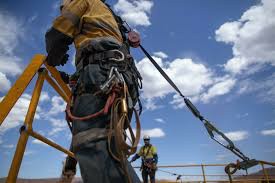


 349,500 Offered Certificates
349,500 Offered Certificates
 24/7 Online Training
24/7 Online Training
 Money Back Guarantee
Money Back Guarantee
 Fully Accredited Courses
Fully Accredited Courses

Created at: 22-02-2025 15:15
When workers are tasked with Working at Heights, safety should always be the top priority. However, even with the best safety measures in place, accidents can still occur. This is why comprehensive emergency rescue planning is not just recommended; it’s essential. In this blog post, we will explore the significance of emergency response planning within the context of Working at Heights training, the key responsibilities of employers, required self-rescue techniques, and real-world examples that highlight the successful implementation of these plans.
Accidents and emergencies can occur without warning, especially when working at elevation. Having a robust emergency rescue plan can mean the difference between life and death. Such planning ensures that all workers are prepared for emergencies, enabling quick and efficient responses that minimize risks. Key aspects include:
Self-rescue is often the first line of defense during a height-related emergency. Workers must be equipped with the knowledge and skills necessary to extract themselves from dangerous situations. Here are some critical self-rescue techniques:
The role of employers in ensuring a safe working environment cannot be overstated. Employers have a legal and ethical obligation to provide the necessary training, equipment, and planning for emergency situations. This includes:
In any emergency, acting quickly and efficiently is paramount. Here’s a structured approach to emergency responses:
Numerous cases exist where effective emergency rescue planning saved lives. For instance, in a construction site accident in Cork, swift action by trained personnel utilizing proper rescue equipment led to a rapid recovery of an employee who had fallen. This incident highlighted not only the importance of having a solid plan but also the effectiveness of regular training. Another case in Galway involved a worker who was able to employ self-rescue techniques thanks to the rigorous Working at Heights Safety Course offered by a local training provider.
To develop a winning emergency rescue plan, consider the following best practices:
Emergency rescue planning is a vital component of Working at Heights safety protocol. Investing time in preparing for emergencies not only protects workers but also fosters a safer workplace culture overall. Businesses must prioritize integrating emergency rescue planning into their Working at Heights training programs.
Don't wait until an accident happens. Equip your team today with the knowledge and resources they need for safe operations at height.
For more information on the best Working at Heights training in Ireland, including our comprehensive online courses, please visit our course page or contact us at [email protected].